The story of a Storyteller & his Instrument…

It’s a familiar sight. Hues of the melting twilight blend into the silhouettes of curious listeners who have assembled around a balladeer under an anonymous tree in Rajasthan. A peculiar ritual of the Bhopas who have settled here requires the balladeer to narrate a story to all of village folk because a family’s wishes have finally been fulfilled. The story isn’t any ordinary story. It is narrated frame by frame from the Phad paintings that illustrate the glory of Pabuji, a hero of the local tribe.
Once these paintings are unfurled, the Bhopa storyteller gracefully steers his narrative through this 9m long scroll dawned in red and blue colors against a backdrop of soulful music spilling out of a folk instrument called Ravanhatta. Maybe somewhere we are lead to believe that the pied–piper man must have had similar inspiration as these native storytellers with the Ravanhatta, because the essence of hypnotizing with words and casting a spell with music is a treasured part of human fantasy. Only, the former tried it on rats first
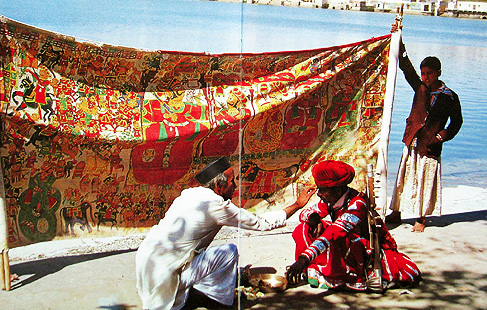
Image: Marg-Publication, Insight into the narrative tradition in Indian Art
The origin of the Ravanhatta may be traced back to the Hela civilization that existed in Sri Lanka during the reign of demon king Raavana. Myth has it thatRaavan was an ardent devotee of Hindu God Lord Shiva and rendered divine music to please the lord using the Ravanhatta or Raavanstorm.
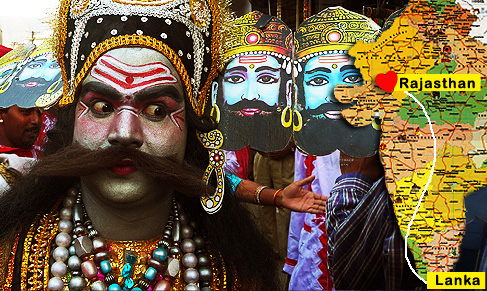
But why would a Sri Lankan instrument become such a revered object amongst masses in the states of Rajasthan, Madyha Pradesh and Gujarat? A certain story from the Ramayana suggests that during a war between Sri Ram and Raavan, Hanuman had incidentally picked up the Ravanhatta from Lanka and brought it to North India. Another folk belief prevalent amongst the localities in the Mandsaur district in Madhya Pradesh is that Raavan’s wife Mandodari was their daughter and hence Raavan is regarded as their son-in-law. The Ravanhatta played by the thori or Nayak Bhopas of Rajasthan is infact believed to be one of the most ancient stringed instruments, which became a precursor to the present day violins.
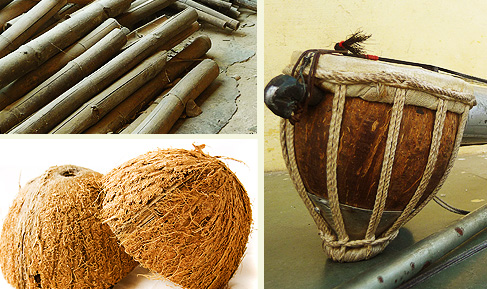
It is fascinating to know that people pursuing this craft are not only skilled artisans but also double up as proficient musicians. Materials required to make this instrument are the locally available bamboo shoots, wood, coconut shell and metal pipes. These materials are the preferred choice to create the 80-90cms long bent central stem of the instrument. This long stem is punctured with holes at regular intervals on one end, in order to affix the knobs, which are used to fine tune the music being rendered by the strings attached to them. On the other end of the stem, a bowl made out of coconut shell (even metal and clay at times) with its mouth covered in goat hide is affixed. The two fundamental sets of strings that are eventually caressed in the creation of music are that of metal wire and horse hair.
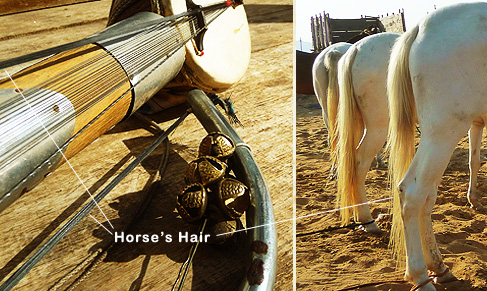
These hair obtained from the tail of the horse can sum up to be the most exclusive ingredient for the creation of this instrument as besides being really strong, they lend a unique unparalleled quality of the music. Interestingly, the hair are coated with a powder cake (Bejara) to reduce the friction that might occur when they are rubbed against each other in the process of weaving tunes. Variation in sound texture may be achieved by modifying the tension in horse hair as the fingers move over them. The instrument may further be accessorized by attaching colorful pouches, beads, tassels, musical adornments (ghunghroo) according to the sensibility and convenience of the designer.
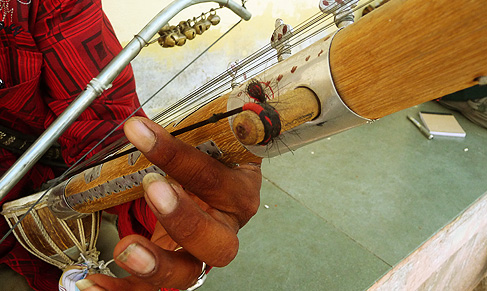
The story tellers do not follow a specific set of rules. They devise the synchronies of music and narration as and when they practice. But the craft seeks as much sensitivity of sound as it seeks dexterity of the fingers.
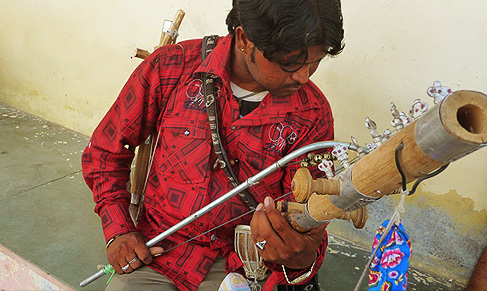
“With the age old traditional ceremonies losing their identity, the ritual of story telling on auspicious occasions is fading away. These days we are left with the option of performing at tourist spots and fairs” says Shor Ji Bhai Bhopa as he recalls that scores like “kesariya balam padhaaro more des…” and other popular songs strike greater familiar chords with the local village folk and tourists alike. Today as this art is quietly losing its sheen, Shorji Bhai is left as one of the handful of storytellers who continue to balladeer with the Ravanhatta at local fairs like the Pushkar mela.

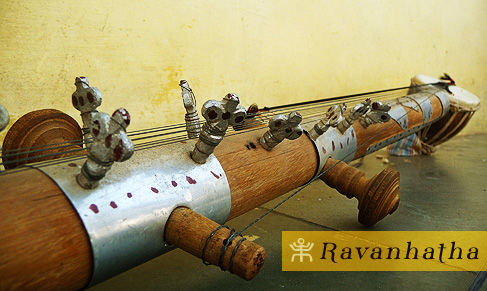
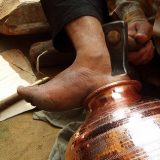









Rascal Knarrtsch
I met this man in Pushkar. A sympathetic one. He showed me how to play my Ravanhatta. I bought the instrument from a friend in Pushkar. It sounds is fantastic.